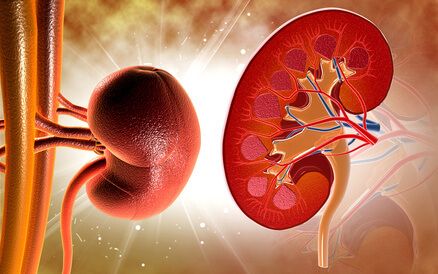Coronary microvascular dysfunction (CMD) is emerging as an important cause of myocardial ischemia, and its role in the pathogenesis of cardiovascular disease—including angina patients with nonobstructive coronary lesions—is well known.

Currently, there are several definitions of CMD and several invasive and noninvasive diagnostic tests. Using invasive tests, heterogeneous patterns of microvascular dysfunction, such as coronary flow reserve (CFR) and microvascular resistance index (MRI), can be classified. The diagnostic criteria used in the studies require more evidence to assess the relationship between CMD and the long-term prognosis.
The aim of this retrospective study was to compare the prognostic impact according to different CMD patterns (CFR and MRI) in patients with suspected myocardial ischemia.
The primary endpoint (PEP) was cardiovascular death and hospitalization for heart failure. The secondary endpoint was the individual PEP items.
According to invasive physiological indices, patients were divided into four groups (CFR<2.5, MRI ≥25). Group 1 (G1): preserved CFR, low MRI. Group 2 (G2): preserved CFR, increased MRI. Group 3 (G3): decreased CFR, low MRI. Group 4 (G4): decreased CFR, increased MRI.
Read also: Left Main Revascularization: 12 Year Registry in Canada.
Researchers analyzed patients from the Prognostic Impact of Cardiac Diastolic Function and Coronary Microvascular Function Registry. Out of 533 patients, 375 had intermediate but functionally nonsignificant lesions (FFR >0.80). Mean patient age was 60 years old, and most subjects were male. The most frequent clinical presentation was stable angina. Most patients were in G1 (49.6%), followed by G3 (19.5%), G4 (18.5%) and G2 (12.5%). More than half of the patients had preserved ventricular function, and most had no diastolic dysfunction. The most frequently evaluated coronary artery was the anterior descending artery; mean FFR was 0.89.
Regarding the results, the mean follow-up was 3.5 years. The cumulative incidence of the PEP was significantly different among the 4 groups; G1, 20.1%; G2, 18.8%; G3, 33.9%; G4, 45.0%; p < 0.001. In addition, there were significant differences between groups when individual components of the PEP were analyzed (p < 0.001). Decreased CFR presented significantly higher risk of PFP compared with preserved CFR with low or increased MRI. In contrast, there was no significant difference in the PEP risk between low and increased MRI in the groups with preserved CFR.
Conclusion
Among patients with suspected chronic ischemic heart disease who had intermediate but functionally nonsignificant coronary lesions, decreased CFR was associated with an increased risk of cardiovascular death and hospitalization for heart failure. However, MRI was of limited prognostic value in these patients.

Dr. Andrés Rodríguez.
Member of the Editorial Board of SOLACI.org.
Reference: David Hong et al Circ Cardiovasc Interv. 2023;16:e012621.
Subscribe to our weekly newsletter
Get the latest scientific articles on interventional cardiology





